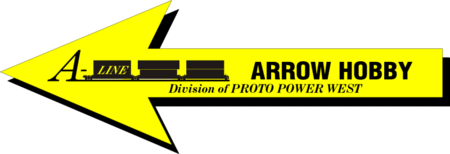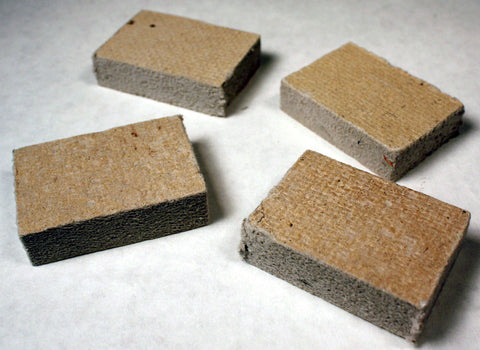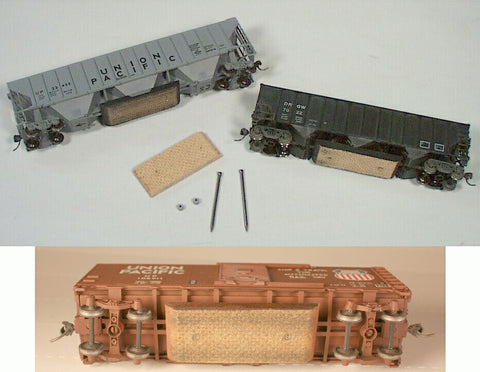Track Cleaner
THERE are many, many YouTube videos on the subject of track cleaning and different equipment so its kind of hard to know what is good or bad. So instead of rehashing stuff I will put in my 2 cents on the subject.
Number one for me is to never, never use Brite Boy erasers, they are worthless and only scratch the rail and cause more dirt to have a place to go in the scratches. They have no ability to pickup dirt or oil. All they do is mash the dirt back into the scratched rail.
The problem with so many people is that they wait until the track is really dirty and then try to clean it with harsh abrasives.
Depending on where your layout lives has alot to do with how dirty your track may get and how often it should be cleaned.
That being said, I would still go with my theory that track should be cleaned continuously and not periodically! This can be accomplished by having track cleaning cars run in every train that runs on the layout without fail.
Now after all that said, here is the big KICKER about cleaning track that very few talk about! You can use any track cleaner you want, but if you don't clean the wheels on your rolling stock your like a dog chasing it's tail. No matter how much you clean, the minute you start running trains again with dirty wheels you are just depositing the dirt right back onto the rails, hence, dog chasing it's tail!
How many times do you clean your loco wheels before you think of cleaning your rolling stock wheels!
I also agree, that plastic wheels are the worst things you can use, metal wheels are must.
I see it in my club, that people are lazy and want the easy way out so they don't bother with cleaning equipment and concentrate on CLEANING TRACK or at least let someone else clean track so they can run their dirty trains.
Another important thing that I have discovered with dirty rolling stock wheels is that if enough dirt builds up on the wheel it forms a tire of dirt around the wheel. Which, believe it or not, will cause derailments! The flange of the wheels become shallower and will pick frogs on switches that are also full of dirt.
I have been in the hobby for 50 years, have my own 50' X18' home layout which I rarely clean track on. Also, have been involved in club standards for along time and a member of very large club layout that has all these track cleaning problems to deal with.
I have owned my own model railroad business for 40 years and have learned alot of these lessons by trial and error over the years.
After all this said, since track cleaning is so important, and after looking at all the track cleaners on the market. I decided to do something about it and designed our own track cleaner car. My son gave it the name
Shine-O-Matic .
Go to this link to find out all about it:
Thanks
Joe DElia
ppw-aline@att.net



